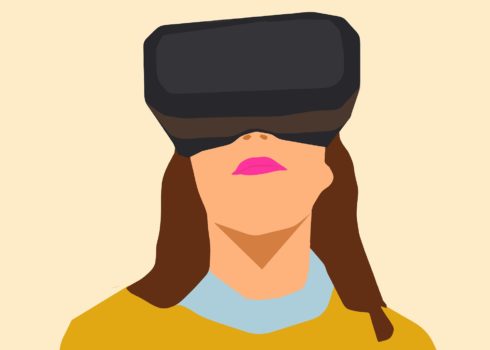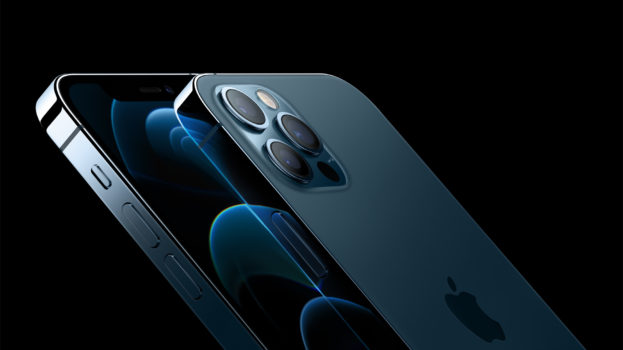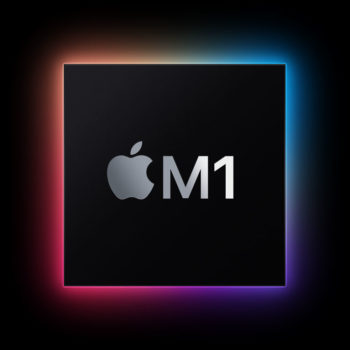
Apple’s first entry into virtual reality could be an expensive VR headset with limited AR capabilities, according to a Bloomberg report.
“Apple Inc.’s first crack at a headset is designed to be a pricey, niche precursor to a more ambitious augmented reality product that will take longer to develop, according to people with knowledge of the matter,” said the report.
The people asked not to be identified, citing privacy plans, but they said it would be a VR headset focused on gaming, watching videos, and communicating, and that Apple plans to launch the headset as soon as 2022 or early 2023.
Current consumer VR headsets cost from $300 to $900, and the Apple headset reportedly could cost a lot more. If they can successfully sell a pair of headphones for $550, who knows how much a dedicated VR headset would cost.
The headset is designed to work as a standalone device, and run on a battery, similar to the Oculus Quest 2.
Apple’s planning on using a fabric exterior to reduce the weight, and also to include some external cameras to enable AR features.
The recently released iPad Pro and the new iPhone 12 feature a LiDar scanner, so the company has already put its foot in the AR door, and the high-end VR device could be a stepping stone to more affordable and user-friendly Apple AR glasses.

“The company is building a high-end, niche product that will prepare developers and consumers for its eventual, more mainstream AR glasses,” said the report.
The report suggests Apple might be expecting to sell one headset a day in each retail store, with annual sales of just over 180,000 units, which is on par with the $5,999 Mac Pro desktop.
Apple is reportedly aiming to include some of its most advanced and powerful chips in the headset, along with displays that are much higher-resolution than in any existing VR headset. Some of the tested chips are supposedly more powerful than Apple’s recently released M1 Mac processors.

The company apparently designed the headset with a fan, and combined with the powerful processors, this made the headset too heavy in early testing.
Apple also reportedly removed the space VR headsets usually have for people who wear glasses and developed a system for custom prescription lenses to be inserted. This move could expose Apple to regulations governing the sale of products with prescriptions, which are different depending on the country they’re sold in.
This could also be a nuisance for multiple users wanting to share one headset or for people who are perfectly content wearing a VR headset with the glasses they already own.
Apple originally planned to use less powerful processors and offload much of the work to a hub inside a user’s home, but the idea was quashed by Jony Ive, Apple’s design chief at the time, according to Bloomberg.
The VR headset is codenamed N301 and is in a late prototype stage, but it could be scrapped or changed before launch. Apple’s future AR glasses are codenamed N421 and are in an early stage called “architecture,” which means Apple is still working on underlying technologies.
A heavy, expensive VR headset that isn’t expected to sell very well is a strange move for Apple to make, but Apple is always buying up patents and developing new technologies that don’t ever see the light of day.
It’s possible Apple doesn’t intend to release the device, and no one could blame them as it doesn’t sound like a game-changer in any way. The world probably doesn’t need another heavy and expensive VR headset, even if the display’s a little nicer.
There are more AR headsets coming out all the time too, such as the Lenovo ThinkReality A3, and Apple would have to do something very special in that field to get the average person to want to regularly use a pair of AR glasses.
Apple’s been exploring augmented and virtual reality for more than ten years.
Recently, it’s been buying up multiple AR and VR companies and also increased hiring in the past several years, so an Apple AR and VR product could be closer to reality, whatever it turns out to be.
Apple has a way of convincing people they want something they don’t really need, so we’ll see how their first foray into virtual reality turns out.
- OpenAI’s new reasoning AI model achieves human level results on intelligence test - January 2, 2025
- OpenAI’s new Point-E lets you generate 3D models with text - December 21, 2022
- Celebrity Cruises unveils virtual cruise experience - December 15, 2022
